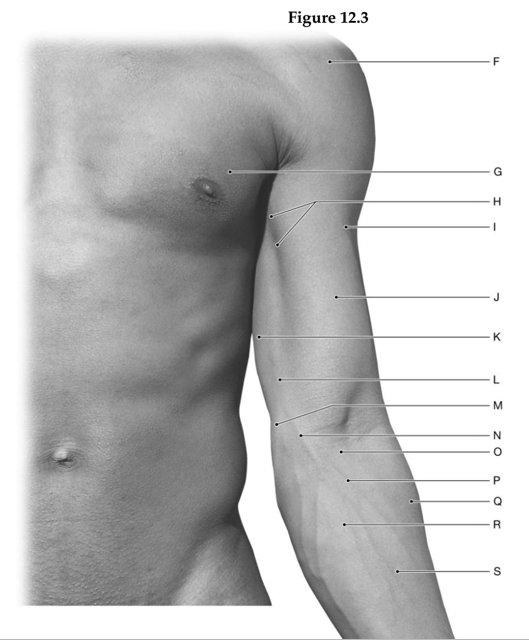Which of the following is an extensor of the neck?
A. Posterior scalene
B. Semispinalis capitis
C. Sternocleidomastoid
D. Occipitalis
E. Omohyoid
B. Semispinalis capitis
You might also like to view...
Using the figure above, identify the labeled part.

1. Label A: ______________________________
2. Label B: ______________________________
3. Label C: ______________________________
4. Label D: ______________________________
5. Label E: ______________________________
6. Label F: ______________________________
7. Label G: ______________________________
8. Label H: ______________________________
9. Label I: ______________________________
10. Label J: ______________________________
11. Label K: ______________________________
12. Label L: ______________________________
13. Label M: ______________________________
14. Label N: ______________________________
15. Label O: ______________________________
16. Label P: ______________________________
17. Label Q: ______________________________
18. Label R: ______________________________
19. Label S: ______________________________
20. Label T: ______________________________
21. Label U: ______________________________
Most of the O2 carried in the blood is dissolved in plasma.
Answer the following statement true (T) or false (F)
Which of the following is true of the pulmonary pressures?
A. Because of pneumothorax, intrapleural pressure equilibrates with atmospheric pressure. Without the positive force of alveolar pressure pushing the lung outward, the lung collapses due to elastic recoil forces. B. Intrapleural pressure is always positive so that the pleural membranes remain in contact. C. An increase in transpulmonary pressure creates a larger collapsing pressure across the lungs, which is accompanied by the contraction of the lungs (alveoli). D. The difference between intra-alveolar pressure and atmospheric pressure is the pressure gradient that drives ventilation.
The slight decrease in bone mass with increased age is termed osteopenia.
Answer the following statement true (T) or false (F)